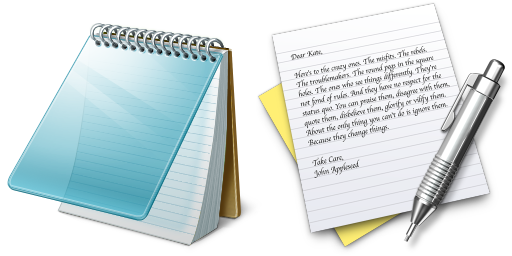User Manual
OnSong File Format
The OnSong file format is a text file that is written in a way to give a song musical meaning. It typically has a .onsong file extension, although OnSong understands any type of plain text file and can render it as an OnSong-formatted file. This format uses special characters to attribute meaning to different parts of a song.
Apps for Editing Plain Text
The first thing to know is that an OnSong file is a plain text document. This makes it very easy to edit on any platform with included software.

- On OS X open TextEdit from your Applications folder. TextEdit is a general purpose word processing program that can also edit plain text files. Be sure to switch to plain text by choose Make Plain Text from the Format menu.
- On Windows open the Notepad application from the Start menu.
To follow along with the rest of this tutorial, download this Example OnSong File and open it in your application of choice.
Sections
The first thing to know about the OnSong file format is that it can be divided into sections. Sections are typically used to divide verses from the chorus or bridge. They can also be used to divide a verse into two separate stanzas for lyrics projection, or to make things easier to read. You can even label sections if desired.
Metadata
Metadata is information about the song which is always contained in the first section. Typically these are provided in name/value pairs separated by a colon, each being placed on its own line. You can also set the title and artist of the song as the first and second lines in the file.
Chords and Lyrics
Chords are placed to align with certain words or phrases. OnSong supports two kinds of chord formatting: Bracketed Chords and Chords Over Lyrics.
ChordPro
While the OnSong format does much of what you need in a chord chart, the ChordPro format has a few other tricks up its sleeve. You can use ChordPro syntax interchangeably for advanced options.
Formatting
Want to bold or highlight a line of lyrics or highlight a word or phrase? OnSong uses special characters to format your chord chart for harmony parts, or to make things stand out.
Pages
You can now define separate pages in your chord chart which can be used to force page breaks for printing.


